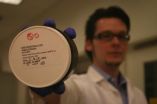Ownership increases the value of products: How does gender matter?
2012-08-15
(Press-News.org) The price a consumer will pay for a product is often significantly less than the price they will accept to sell it. According to a new study in the Journal of Consumer Research, this occurs because ownership of a product enhances its value by creating an association between the product and consumer identity.
"Our studies support the idea that ownership enhances the attractiveness of a product because ownership creates an association between the item and the self," write authors Sara Loughran Dommer (Georgia Institute of Technology) and Vanitha Swaminathan (University of Pittsburgh).
In several studies, the authors found a link between possessions and consumer identity. They also discovered that men are more likely to consider a product's association with specific social groups when making a purchase. "Men strive to differentiate themselves and group distinctions are more significant for them. In contrast, women are focused on forming connections and less likely to classify themselves as separate from others. They are less likely to purchase products because of an association with a particular social group," the authors write.
Businesses can benefit from creating feelings of ownership through promotional strategies such as free trials, samples, and coupons. For instance, a consumer may be more willing to purchase a couch if they are offered a free trial, clothing stores increase sales by having customers try on items, and sporting goods stores could allow consumers to try out equipment in the store to boost sales.
However, companies wanting women to identify with and purchase their brands need to work harder to emphasize the identity differences across brands. A good example would be Apple's recent Mac versus PC advertising campaign that depicted the distinct identities of the two brands.
"If ownership increases the value consumers place on products, then companies could benefit from any action that creates feelings of ownership before actual purchase. Our findings regarding gender differences also suggest that in certain situations companies may benefit from prompting female consumers to make intergroup comparisons," the authors conclude.
INFORMATION:
Sara Loughran Dommer and Vanitha Swaminathan. "Explaining the Endowment Effect Through Ownership: The Role of Identity, Gender, and Self-Threat." Journal of Consumer Research: February 2013. For more information, contact Sara Dommer (sara.dommer@scheller.gatech.edu) or visit http://ejcr.org/.
END
ELSE PRESS RELEASES FROM THIS DATE:
2012-08-15
Consumers enjoy products more in the long run if they don't overuse them when first purchased, according to a new study in the Journal of Consumer Research.
"Consumers are naturally prone to consume products they enjoy too rapidly for their own good, growing tired of them more quickly than they would if they slowed down," write authors Jeff Galak (Carnegie Mellon University), Justin Kruger (New York University), and George Loewenstein (Carnegie Mellon University).
We often face decisions about how rapidly to consume products we enjoy: how quickly to eat a favorite dessert; ...
2012-08-15
Growing communities can overcome conflict and fragmentation, and increase diversity, without losing their sense of collective belonging, according to a new study in the Journal of Consumer Research.
"Consumption communities are groups of people united by a shared passion. A persistent challenge to community is continued engagement, and collective enterprises can be destabilized by differences as they grow. Our research shows how community members leverage social and economic resources to overcome differences," write authors Tandy Chalmers Thomas (Queen's University), ...
2012-08-15
Confident consumers pay more attention to advertisements and product information that focus on high-level features of a product, according to a new study in the Journal of Consumer Research. Less confident consumers, however, focus on the basics.
"When we feel confident, we think that abstract information is more relevant to us. But when we feel doubtful, we think that concrete information is more relevant. The more relevant we perceive information to be, the more we will focus on it," write authors Echo Wen Wan (University of Hong Kong) and Derek D. Rucker (Kellogg School ...
2012-08-15
Sticky plaques of proteins called amyloids mark several different, though related degenerative brain diseases including Alzheimer's, Parkinson's and Creutzfeld-Jacobs.
The symptoms of these disorders overlap and methods to diagnose and monitor them are not very advanced.
To solve this problem, scientists at the University of California, San Diego, have devised several new fluorescent probes that change color depending on what type of amyloid they encounter. Because amyloids accumulate in the eye as well as the brain, their discovery offers hope that one day neurodegenerative ...
2012-08-15
For the first time, engineers at the University of New South Wales have demonstrated that hydrogen can be released and reabsorbed from a promising storage material, overcoming a major hurdle to its use as an alternative fuel source.
Researchers from the Materials Energy Research Laboratory in nanoscale (MERLin) at UNSW have synthesised nanoparticles of a commonly overlooked chemical compound called sodium borohydride (NaBH4) and encased these inside nickel shells. Their unique nanostructure has demonstrated remarkable hydrogen storage properties.
"No one has ever ...
2012-08-15
The Pipe Nebula is a prime example of a dark nebula. Originally, astronomers believed these were areas in space where there were no stars. But it was later discovered that dark nebulae actually consist of clouds of interstellar dust so thick it can block out the light from the stars beyond. The Pipe Nebula appears silhouetted against the rich star clouds close to the centre of the Milky Way in the constellation of Ophiuchus (The Serpent Bearer).
Barnard 59 forms the mouthpiece of the Pipe Nebula [1] and is the subject of this new image from the Wide Field Imager on the ...
2012-08-15
An international team of researchers has found that certain bioactive components found in human milk are associated with a reduced risk of HIV transmission from an HIV infected mother to her breast-fed infant. Their study will be published in the August 15 online edition of American Journal of Clinical Nutrition.
"In developing countries, HIV-infected mothers are faced with the decision of whether or not to breastfeed their babies," said Lars Bode, PhD, assistant professor in the Department of Pediatrics at the University of California, San Diego School of Medicine. ...
2012-08-15
DURHAM, N.C. – Researchers at Duke University Medical Center may finally have discovered why people with sickle cell disease get milder cases of malaria than individuals who have normal red blood cells.
In a finding that has eluded scientists for years, Duke researchers discovered that genetic material in red blood cells may help alter parasite activity via a novel mechanism that alters parasite gene regulation.
"One of the most interesting findings in our study is that the human microRNA (very small units of genetic material) found in sickle red cells directly participate ...
2012-08-15
Melting over the Greenland ice sheet shattered the seasonal record on August 8 – a full four weeks before the close of the melting season, reports Marco Tedesco, assistant professor of Earth and atmospheric sciences at The City College of New York.
The melting season in Greenland usually lasts from June – when the first puddles of meltwater appear – to early-September, when temperatures cool. This year, cumulative melting in the first week in August had already exceeded the record of 2010, taken over a full season, according to Professor Tedesco's ongoing analysis. ...
2012-08-15
In our zest for cleanliness, have we permanently muddied our nation's waters?
A science team from Arizona State University, in collaboration with federal partners,
has completed the first statewide analysis of freshwater bodies in Minnesota, finding widespread evidence of the presence of active ingredients of personal care products in Minnesota lakes, streams and rivers.
These products are a billion dollar industry and can be found in antimicrobial soaps,
disinfectants, and sanitizers to scrub our hands and clean countertops. Hundreds of antimicrobial products are ...
LAST 30 PRESS RELEASES:
[Press-News.org] Ownership increases the value of products: How does gender matter?


